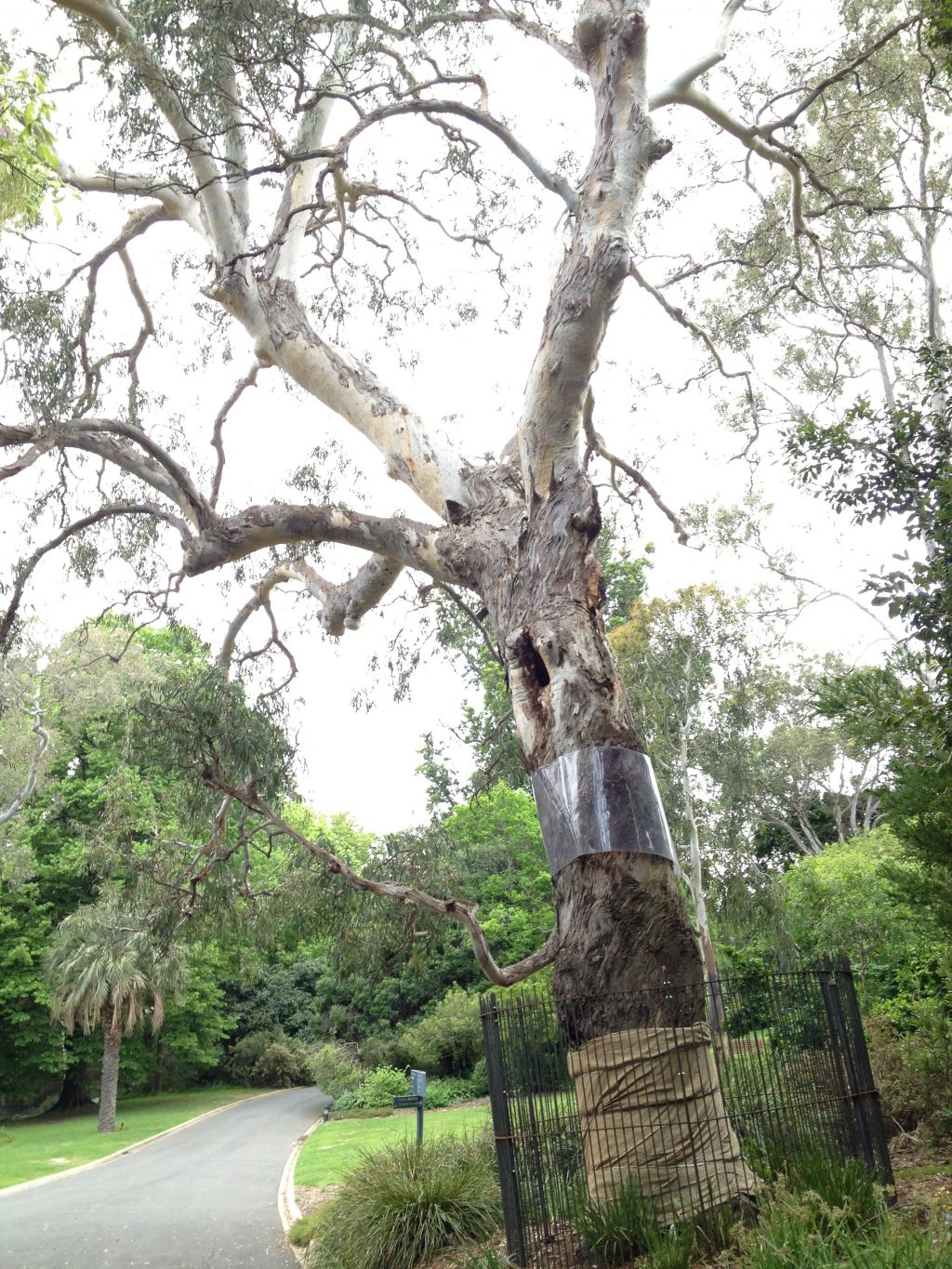TrustTalk on First Aid and Triage for Significant Trees at the Royal Botanical Gardens

The National Trust’s TrustTalks series switched focus to natural heritage on 16 March with a lecture on the management of significant trees by the Royal Botanical Garden’s Curator of Arboriculture, Will Jones.
Seven months into a Garden wide audit (and having just planted a specimen to memorialise musician Nick Cave) Will spoke about the processes through which his team manage the Garden’s thirty eight hectares, including forty ‘significant’ trees. A rigorous and evolving system of inspections, maintenance, preventative and protective works comes together to keep the Gardens in the excellent condition that we have come to expect. Central to this process is the identification and treatment or removal of ailing trees: Will and his team physically climb and catalogue each tree in the popular Oak Lawn once every three months to check the health of the specimens.
Techniques for arboricultural work that are used in the Garden range from tried and true low tech methods such as resting a cup of water on the roots of a tree to test for instability in the root system (ripples in the water indicates instability), to hydro-excavation and experiments with drones to inspect hard to reach tree canopies. Though sometimes it is necessary for access to trees to be restricted during these often lengthy processes, Will and his team attempt to minimise these restrictions to better allow the public to use the Gardens as intended.
It was refreshing to hear that the Curator hesitates to install protective fences when undertaking restoration works on trees in the Gardens, a measure which he felt disconnected visitors from the specimens. This sort of thinking is emblematic of a professional who understands cultural heritage conservation to be most powerful when individuals can properly engage with sites and objects that are being protected; a progressive philosophy that needs to remain central to the practice of cultural heritage conservation in all its forms.
Will spent a good portion of the evening speaking in detail about the resolute efforts of his team to keep the ‘Separation Tree’ alive after a devastating and malicious attack by vandals in 2010, the effects of which were worsened by a second attack in 2013. The tree, of significance as being one of the oldest remnant trees in the Gardens and the site of celebrations in November 1850 when Victoria officially separated as a colony from New South Wales.
The tree stood as a proud symbol of a new colony’s efforts to forge a distinct identity; its size and distinct shape became a strong presence in the landscape at the Gardens. As a listed, significant specimen, every possible technique was used to assist the tree to survive the attack, which destroyed what amounted to 95% of the tree’s vascular system. Extensive grafting was employed to help the tree grow the connective bark necessary to transport nutrients from the soil, but after the second attack in 2013 and a complete ‘leaf drop’ in late 2014 (which signalled a loss of stored nutrients) hope for future growth was slipping away.
Indeed, it was the speaker’s unfortunate duty to inform the audience that it was his belief that the beloved tree is past saving; efforts have shifted to the management of the remaining canopy to mitigate the danger of falling limbs. The task of dealing with a mammoth dead tree looms large as questions regarding the specimen’s future will have to be answered. The possibility of memorialising the tree by constructing a table for State Parliament out of its wood was raised, but the matter of the lost visual presence of the tree within the Garden itself remains problematic to Will and his team.
Many questions and discussion followed Will’s presentation. It was fascinating to listen to a professional talk with passion about that which fascinated them, a theme which guides the Trust Talk series.
The National Trust’s Advocacy and Conservation Team has developed a monthly speaker series program that will feature eminent industry experts and interest groups sharing their heritage passions and lessons-learnt with industry professionals, National Trust members and the community at large.
+ There are no comments
Add yours